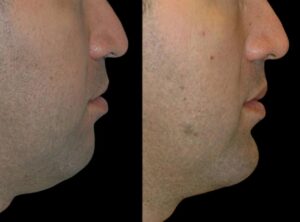
Modern vehicles are smarter and safer than ever, thanks to the integration of Advanced Driver Assistance Systems (ADAS). These systems help prevent accidents, support drivers with real-time feedback, and even automate specific driving functions. But for ADAS to work effectively, every camera, sensor, and radar must be precisely aligned. That’s where vehicle calibration in Twin Cities plays a vital role—especially after repairs or windshield replacements.
In this guide, we’ll explore the relationship between ADAS and vehicle calibration, why accuracy is non-negotiable, and how Twin Cities drivers can ensure their safety systems perform as intended.
What Are Advanced Driver Assistance Systems (ADAS)?
ADAS refers to a suite of electronic technologies designed to assist drivers. These systems include:
- Lane Departure Warning
- Blind Spot Detection
- Adaptive Cruise Control
- Parking Assistance
- Forward Collision Warning
- Traffic Sign Recognition
- Automatic Emergency Braking
ADAS enhances safety by providing alerts and, in some cases, automatic actions to prevent collisions. These features rely heavily on high-precision components.
The Critical Role of Sensors and Cameras
To function correctly, ADAS systems gather data from an array of components:
- Cameras (usually mounted on the windshield)
- Radar units (in bumpers or grilles)
- Lidar sensors
- Ultrasonic sensors (used in parking systems)
Each of these components must be aligned to the exact specifications provided by the vehicle manufacturer. A small shift of even a few millimeters can throw the entire system off, making it unreliable or even dangerous.
What Is Vehicle Calibration?
Vehicle calibration is the process of adjusting these cameras and sensors after:
- Windshield replacements
- Collisions or body repairs
- Suspension or wheel alignment changes
- Fault codes or ADAS malfunctions
Calibration ensures that every system is synchronized with the car’s current condition, dimensions, and angles.
Why Accuracy Matters in Twin Cities Driving Conditions
Drivers in the Twin Cities face a variety of challenging conditions—icy roads, heavy traffic, and unpredictable weather. In these environments, ADAS features are more than just conveniences; they are safety essentials. However, their accuracy is only as good as their calibration.
That’s why vehicle calibration in Twin Cities must be done by experienced professionals who understand local road layouts, weather challenges, and manufacturer standards.
Common ADAS Issues Caused by Improper Calibration
- Delayed Braking Alerts – If your sensors are off, your car may warn you too late—or not at all—about a potential collision.
- Incorrect Lane Positioning – Lane assist features may misjudge the road, leading to unnecessary steering corrections.
- Blind Spot Detection Errors – Your car may miss nearby vehicles or give false alerts.
- Unreliable Cruise Control – Adaptive cruise systems may fail to adjust speed correctly, especially in stop-and-go traffic.
The Calibration Process Explained
There are two main types of ADAS calibration:
- Static Calibration: Performed in a controlled environment with the vehicle stationary. Special targets and tools are used to align cameras and sensors.
- Dynamic Calibration: Done on the road while the vehicle is driven under specific conditions to allow the system to self-adjust.
Some vehicles require both types. Calibration can take anywhere from 1 to 3 hours, depending on the complexity of the system.
How to Know If You Need Calibration?
You may need calibration if:
- You see dashboard warning lights related to ADAS
- Your windshield was recently replaced
- You’ve had a minor collision or bodywork
- ADAS features are acting erratically
- Your vehicle recently underwent alignment or suspension changes
If in doubt, schedule an inspection with a certified technician.
Choosing the Right Calibration Service in Twin Cities
Not all auto repair shops are equipped for accurate ADAS calibration. Choose a provider that:
- Is certified and trained in your vehicle’s make and model
- Uses OEM-approved tools and software
- Offers both static and dynamic calibration options
- Provides documentation and post-service testing
Relying on a trusted provider for vehicle calibration in Twin Cities ensures that your safety systems are working exactly as they should.
Final Thoughts
ADAS has revolutionized how we drive, but its effectiveness depends entirely on accurate sensor and camera alignment. Ignoring calibration can lead to safety risks, insurance issues, and costly mistakes.
If your vehicle has experienced any changes—be it a windshield replacement, accident, or repair—don’t overlook the need for professional calibration. Trust local experts in vehicle calibration in Twin Cities to keep you safe, informed, and confident behind the wheel.







